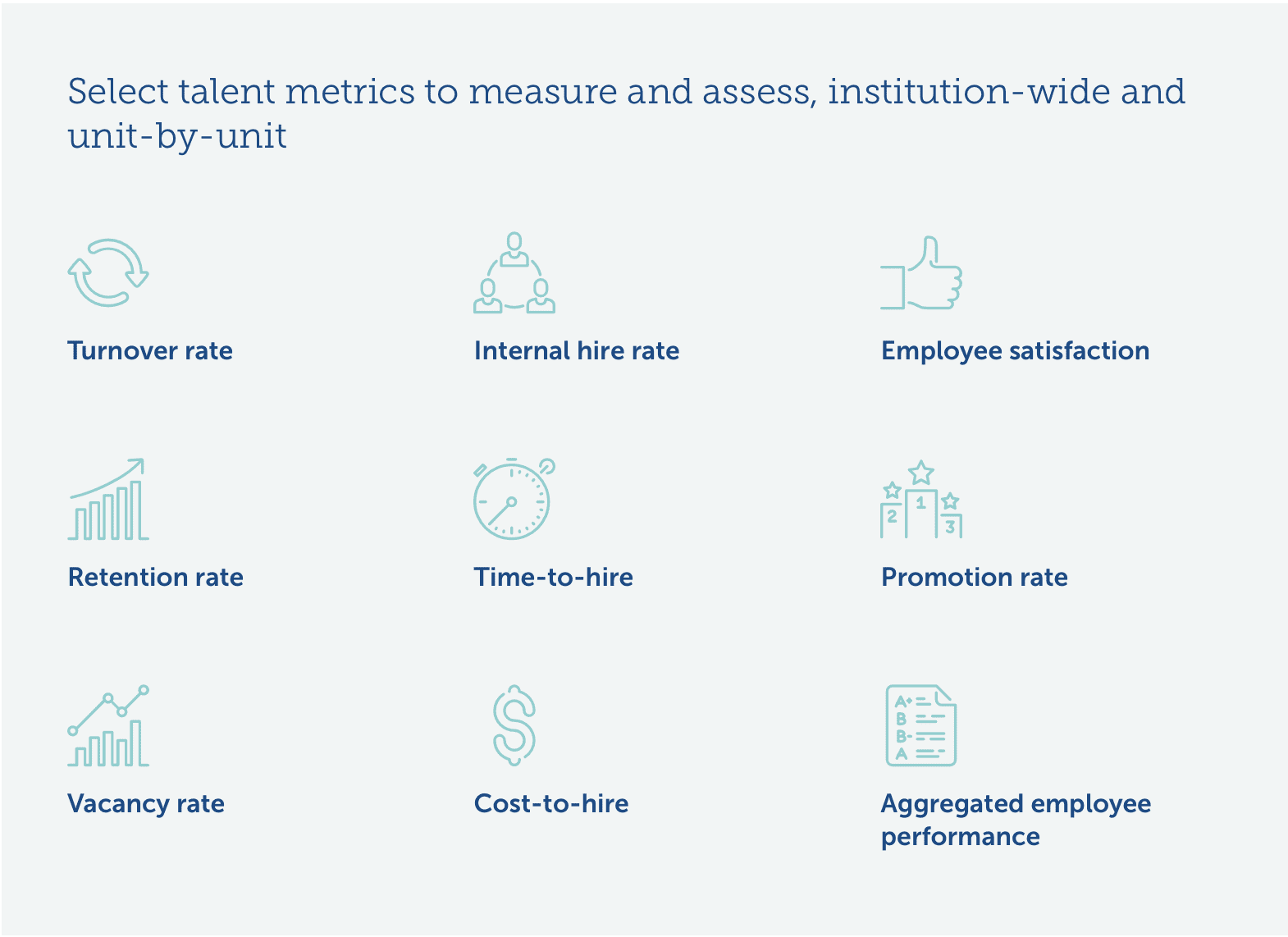3 competencies that take a chief human resource officer from tactical to strategic
December 8, 2022, By Liliana Loosbrock, Senior Research Analyst
The last few years have uniquely burdened chief human resource officers (CHROs), from the intensity of hiring and turnover to the scope creep caused by the pandemic (e.g., COVID-19 protocols, flexible work debates)-CHROs have more transactional responsibilities all while being increasingly relied upon by the cabinet for strategic partnership.
Institutions responded by symbolically elevating the role of the CHRO, often through changes in title or reporting line. But these changes are not enough-CHROs need a different set of competencies than in the past to meet the challenges of increased competition with out-of-sector employers and emerging labor market threats.
EAB’s Talent Questionnaire
70% of institutions who participated in EAB’s Talent Questionnaire indicated they have a CHRO or VP-level position. Complete the survey for your campus.
Here are three competencies your future or current CHRO must possess as a first step to transforming your HR unit into a strategic function.
1. Storytelling
CHRO communications have traditionally been internally focused, with most dedicated to transactional policy updates or reactive responses to employee concerns. But to strategically recruit and retain talent in today’s competitive labor market, CHROs must proactively articulate why prospective and current employees should choose them over other competitors. They also must play a bigger role in bolstering their institution’s reputation as an employer in the market, which requires more complex communications methods and media engagements than traditionally conveyed by HR.
Savvy CHROs will therefore embrace storytelling methods to communicate the reasons why prospective employees want to work at the institution and why current employees want to stay there. Storytelling can also help authentically personify the employee experience and workplace culture and deepen emotional connections and employee loyalty. It requires CHROs to actively listen to employees’ priorities, concerns, and lived experiences and then link these back to institutional- or unit-specific values and strategy.
2. Brokering partnerships
To combat long-standing stakeholder perceptions of HR as a transactional function, CHROs must grow HR’s reputation as a collaborative partner that helps the institution and units achieve strategic goals. Building cross-functional partnerships is also critical because talent outcomes―and therefore CHRO success―are tied to performance in other areas (e.g., finance, DEIJ) and hinge on unit-level buy-in and behavior.
As a result, CHROs must personally reach out to cabinet members and unit leaders to build rapport and discuss their specific talent challenges and goals. In those conversations, CHROs need to immediately identify and demonstrate how they can provide value as a strategic partner-for example, brainstorming ways to diversify candidate pools or sharing retention data to help them prioritize investments.
To build trust and strengthen long-term partnerships, CHROs will also need to invest in regular relationship maintenance behaviors, model customer service in all interactions, and continuously invite feedback.
3. Leveraging data and analytics
Amid tightening budgets and growing reliance on data to measure success, cabinets increasingly expect CHROs to collect and communicate talent data on issues such as staff turnover and employee engagement, as well as prioritize and justify talent-related investments.
Unfortunately, most institutions lack high-quality and easy-to-access workforce data, making it difficult for CHROs to guide strategic talent decisions. CHROs therefore must first strengthen HR and unit-level data collection methods and advocate for needed investments in robust HR management systems and data analytics capabilities.

When equipped with these resources and data, a savvy CHRO measures progress on key talent metrics and communicates issues or priorities back to the cabinet. For example, a data-informed CHRO recognizes the biggest factors influencing employee satisfaction include, but extend beyond, compensation. In conversation with the cabinet, they strategically balance necessary investments in salaries and benefits with other resources that are critical for employee satisfaction, like career development.
Next steps for senior leaders
If you are looking to hire a CHRO, update your job description to incorporate these competencies and consider candidates from other industries such as healthcare and/or functional areas like marketing that are well-aligned with them.
If you are looking to develop these competencies in a current CHRO, create cross-training and mentorship opportunities in divisions with high competency levels in these areas (e.g., IT for data analytics, marketing for storytelling).

More Blogs

How to avoid 3 common salary study mistakes in higher ed

How to target higher ed salary investments to bolster recruitment and retention
